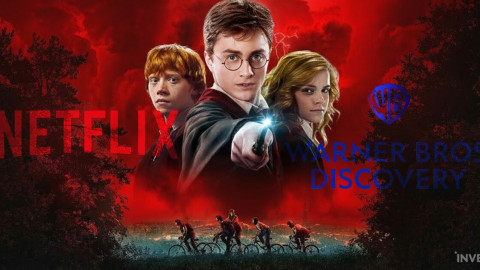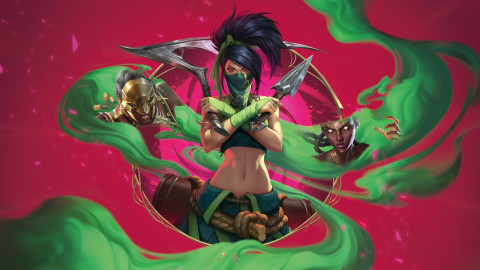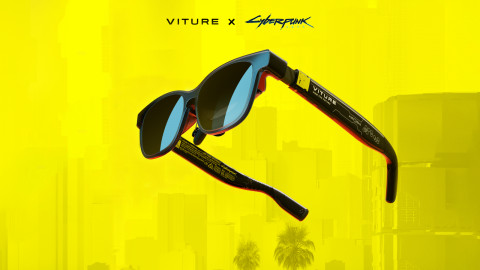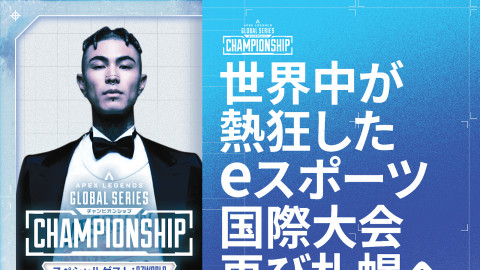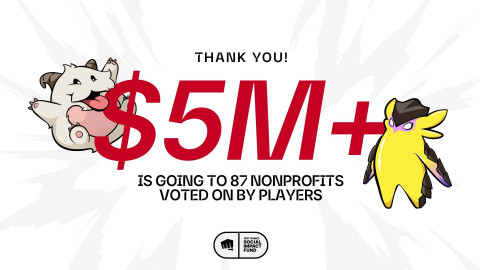
The European League of Legends region underwent a successful overhaul by all accounts. Since the region’s top league transitioned to the League of Legends European Championship (LEC) brand, viewership has increased across the board, and marquee sponsors have joined and others are taking notice.
Once representing Coca Cola, Alban Dechelotte has since become the Head of Business and Sponsorship for the LEC at Riot Games. He has seen and affected Riot’s approach to sponsorship deals, especially in Europe.
Stepping away from the LCS’s shadow
Dechelotte recalled a time when Europe and North America shared the same intellectual property (the League of Legends Championship Series – or LCS for short), and how sponsors would have had to back both regions regardless of the differences the European and North American markets have. So, alongside the leadership team in Europe, he made the decision to separate Europe from North America.
The decision came at a key point, as the LEC was to feature a franchising model. From there, he had a year to make it happen. But there was a blueprint that he could follow from football: the UEFA Champions League.
“In 1992, a competition called the Champions' Cup, which was kind of the leading football competition in Europe, became the Champions' League,” he said. “It was already the best football competition in Europe, but by changing the name and the visual identity and changing the format, they did a huge step forward for football in Europe and became the leading property.”
From there, the multinational team at the Berlin office (26 nationalities overall) had a daunting task: to tell a different story than they did in the previous years. In a way, their success their final 2018 year using the EU LCS moniker facilitated their transition into a legacy-defining 2019 season under the LEC brand.
And they were just getting started. There was no shortage of ideas that might help the broadcast: the Nukeduck hype train, Andrew “Vedius” Day’s character evolution, and MediVedi’s growth are just some changes among many that helped build a new broadcast identity.
“The on-air talent, the crew that we have around Quickshot, have done an amazing job,” Dechelotte said. “They are not scared to fail. The message from our leaders was: if you don't fail, you don't try enough. We saw that with things from Medic and Vedius, Sjokz, Drakos and Froskurinn... these guys really went all-in, and they created amazing content that, at the end of the day, give more reasons to players to become fans.”
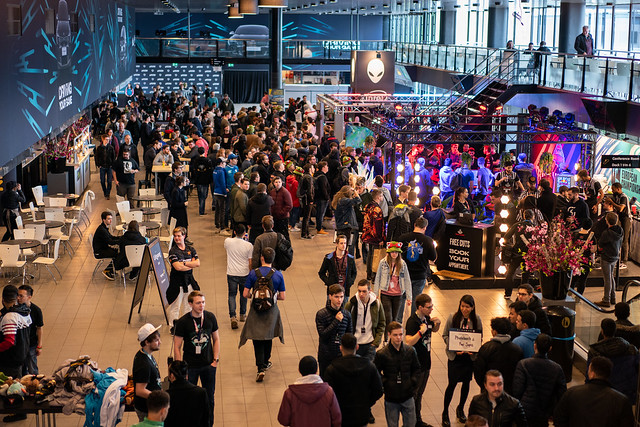
New branding, new story, new sponsors
The European competitive League of Legends product had already proven to be of quality, and a transition from EU LCS to LEC was synonymous with a less confusing repackaging for prospective sponsors.
There was hardly any difficulty in convincing the sponsors they had at the time to take the leap into the LEC era. Dechelotte said: “When we went to sponsors who knew us from the past, telling a new story and having a new brand, talking about what we can change... We had a lot of ideas about things we wanted to change to take advantage of this new era to make it different and better, which also helped us get this momentum on the sponsorship side.”
As an added bonus, the dissociation from the LCS intellectual property allowed them to negotiate directly with European potential sponsors, specifically for the European market. Although it was effective since 2017, the brand change drove that message home. Besides, the format change (from best-of-twos and two separate groups to best-of-ones in a single group) also helped increase viewership across the board.
“The momentum in viewership that we had in 2018 helped us,” said Dechelotte. “We capitalized on that to look at it and inspire [our potential and current sponsors] to be part of the story that we were building for 2019. It's not something that happens overnight.”
From there, they were able to approach potential sponsorship deals from a very early stage – and they needed all the time they had afforded. “When you meet a client and you start to explain what esports is, what League of Legends is, and what the LEC is, there are three to nine months between the first meeting and the moment when you sign the deal,” he explained.
Long-term process bearing fruit
A total of 350 sponsors and partners were on the negotiation table since ‘shortly after Copenhagen,’ around April 2018. By the time the summer finals in Madrid had arrived, ‘between 20 and 50’ remained interested. What they saw at Madrid – an enthusiastic crowd, and the live broadcast – left some of them asking how their brands fit in the LEC, and what the LEC could provide in return. Besides, the transition to franchising was proving to be an interesting point. “We managed to get most of them to say yes,” Dechelotte said.
Some of them, like Sanquin, were on the ground for activations in the LEC Rotterdam. Others, like KIA Motors, were there as marquee sponsors across the board. With so many sponsorships signed, the Berlin team sought to provide each one a chance to express themselves with a sufficient amount of time.
“[The sponsors] also wanted to take the time to be ready,” Dechelotte said. “They wanted to make sure that the first step was the right one. [...] We went week after week to respect the players, and to give some space for each brand to express themselves: What will they bring to players? How can they meaningfully integrate themselves into the show?”
One of the brands, KIA, left the messaging up to the broadcast team, providing them an opportunity to introduce themselves in a meaningful way. It paid dividends both sides: “It was amazing to see that!” Dechelotte exclaimed. “I think they have been rewarded because they have been super welcomed by the community.”
“I come from football, and I've done a lot of campaigns for sponsorship in rugby, cycling, sailing... I've never seen a community that was thankful to a brand that just signed. That was something that was touching to me! It's a high bar for us to always find this thin line of being meaningful and, at the same time, attractive from a marketing point-of-view to a brand.”
The LEC era: introducing franchises and academy teams
And with the transition also involving eager participants in the teams competing in the LEC, the league had found a winning formula. With new entrants such as Origen (backed by RFRSH Entertainment), SK Gaming (with T-Mobile, Mercedes-Benz and 1.FC Köln as shareholders and partners), Rogue, and United Kingdom-based Excel Esports joining G2 Esports, Fnatic, Misfits Gaming, Splyce, Schalke 04 Esports and Team Vitality, the league had franchises committed to its vision.
“We had a lot of anticipation for the switch,” Dechelotte said. “Were they going to be able to switch from this very competitive, very short-term environment from the previous years [where you could get relegated] to this new world where we're all winning together? The click happened immediately.”
“We had a kick-off meeting in December for six hours with all the owners and the brand development managers from all the teams, with me presenting my strategy and the first brands that were joining us. Everyone was positive, optimistic, and asking what they could do. It never stopped. I know there's a lot of banter between some of our favorite heroes in the league, but behind-the-scenes, we are in it together now.”
From there, banter ensued – especially from G2 Esports’ side – and compelling storylines unfolded. Fnatic somehow recovered from a botched start to the season and reached third place, falling to a successful Origen lineup which fell to G2’s dream team that included former Fnatic star mid laner Rasmus “Caps” Winther. In the meantime, SK Gaming reached the LEC playoffs with a team few had expected to succeed, and Splyce displayed respectable showings.

At the same time, their academy teams were all the talk of EU Masters – especially finalists Misfits Premier (representing France) and SK Gaming Prime (Germany). Fnatic Rising (UK) and Splyce Vipers (Spain) also had respectable showings.
But the academy team system also had another effect: teams had a viable pool of substitutes available to them should the need arise. Excel Esports and Rogue made full use of that with several lineup changes during the season; so did Splyce (with Andrei “Orome” Popa) and Team Vitality (with Lucas “Saken” Fayard) entering as emergency replacements as a result of starting players’ illnesses.
“Now, there's a direct link between the teams and some rosters,” Dechelotte said. “You have seen players jump in on the biggest stage coming from the ERL roster. If you look at the long term, that has a lot of potentials. We're going to reinforce this with some ideas that we have cooking at the moment.”
Untapped potential: turning players into fans
How can the LEC grow on the short-term? According to Dechelotte, the answer lies within the playerbase. Unlike traditional sports, League of Legends has the enviable paradox of having more players than fans who never played the game. The key lies in turning the part of the playerbase that does not follow competitive League of Legends into fans.
That includes creating in-game missions specifically centered around watching or participating in the LEC fan experience, as well as preparing champion guides that illustrate how a professional plays a potential fan’s favorite pick. (Disclaimer: the writer of this article has participated in the latter on a freelance basis.)
“You just look at the elements, like the in-game missions and rewards, that connected some players that never watched esports or stopped watching, to come back because it could unlock some value to them directly.” Dechelotte said.
“We're also doing a lot about education: some players don't care about results, they really care about playing better. If we give them examples on how pros use the champions at home, and how they could learn from that to become better players, we can reach out to new people with new angles.”
And for players who are already fans of the show, more surprises awaited – such as, for example, esports host Alex “Machine” Richardson and host/interviewer Frankie “getfrank” Ward.
“As for the core of our audience, we have a lot of focus around the sport, but with the new segments that we have, we are a lot more about entertainment and fun, and tone-in-cheek with some YouTubers coming in and doing some appearances. We also had Machine and Frankie coming in for a week to bring in a new flair and angle for the competition.”
“Let's give our players more reasons to become fans, and the LEC will grow with it!” Dechelotte concluded.

Sort by:
Comments :0


